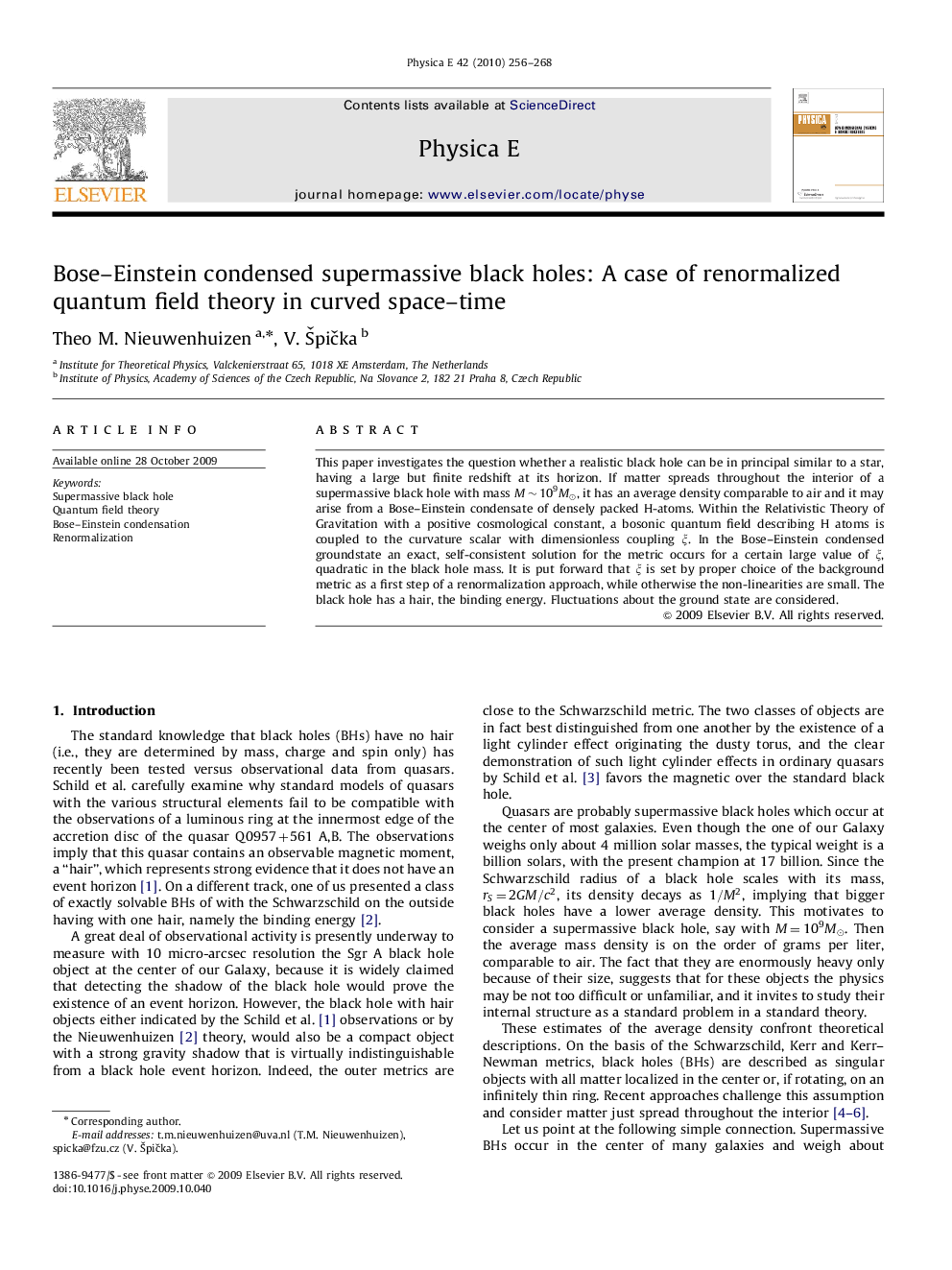| Article ID | Journal | Published Year | Pages | File Type |
|---|---|---|---|---|
| 1546416 | Physica E: Low-dimensional Systems and Nanostructures | 2010 | 13 Pages |
This paper investigates the question whether a realistic black hole can be in principal similar to a star, having a large but finite redshift at its horizon. If matter spreads throughout the interior of a supermassive black hole with mass M∼109M⊙M∼109M⊙, it has an average density comparable to air and it may arise from a Bose–Einstein condensate of densely packed H-atoms. Within the Relativistic Theory of Gravitation with a positive cosmological constant, a bosonic quantum field describing H atoms is coupled to the curvature scalar with dimensionless coupling ξξ. In the Bose–Einstein condensed groundstate an exact, self-consistent solution for the metric occurs for a certain large value of ξξ, quadratic in the black hole mass. It is put forward that ξξ is set by proper choice of the background metric as a first step of a renormalization approach, while otherwise the non-linearities are small. The black hole has a hair, the binding energy. Fluctuations about the ground state are considered.
